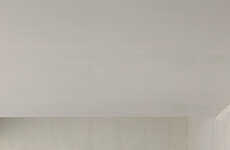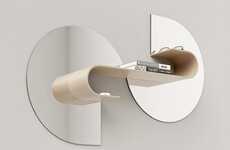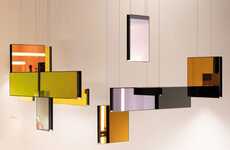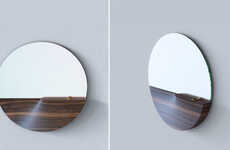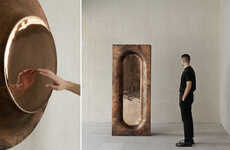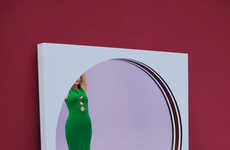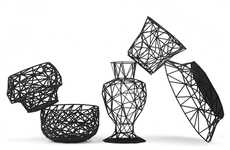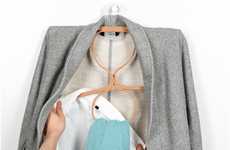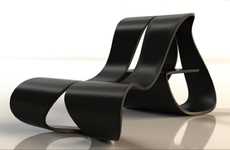
The Antipodi Collection Features 3D-Printed Corners for Easy Interaction
Amelia Roblin — March 5, 2013 — Art & Design
References: simonesimonelli.it
The reflective backings and the wooden frames of the Antipodi Collection have been assembled in a way that isn't particularly atypical. The set comprises a small stretched hexagon, a medium-sized pentagon and a tall rectangle with beveled corners. The first has been designed to be hung, the second perches on a stand and the third sits on the floor.
Simon Simonelli was not done with his pieces just yet. Using a 3D printer, the designer created joints for the timber components in bright red, forming supportive feet and protruding loops and handles that most looking glasses of these types do not have. These accessories of the Antipodi Collection facilitate the connection of a suspension cord, the easy lifting and shifting of tabletop reflector and the controlled turning of the full-length mirror.
Simon Simonelli was not done with his pieces just yet. Using a 3D printer, the designer created joints for the timber components in bright red, forming supportive feet and protruding loops and handles that most looking glasses of these types do not have. These accessories of the Antipodi Collection facilitate the connection of a suspension cord, the easy lifting and shifting of tabletop reflector and the controlled turning of the full-length mirror.
Trend Themes
1. 3D Printing in Home Decor - Designers are using 3D printing technology to add functional features and unique design elements to traditional home decor items.
2. Interactive Interior Design - Incorporating interactive elements, such as handles and loops, into traditional decor items is becoming more popular, allowing for more user-friendly experiences.
3. Innovative Mirror Design - Designers are creating new mirror designs with unique shapes and added functionality to enhance their usefulness in a variety of settings.
Industry Implications
1. Furniture Manufacturing - Furniture manufacturers can incorporate 3D printing technology to create functional components for traditional furniture pieces, adding unique design elements and enhancing user experience.
2. Interior Design - Interior designers can create more interactive and user-friendly spaces by incorporating traditionally non-interactive decor items with new and functional components, such as handles and loops.
3. Home Decor Retail - Home decor retailers can offer unique and functional mirror designs to consumers, catering to the growing demand for interactive and innovative interior design elements.
1.3
Score
Popularity
Activity
Freshness



